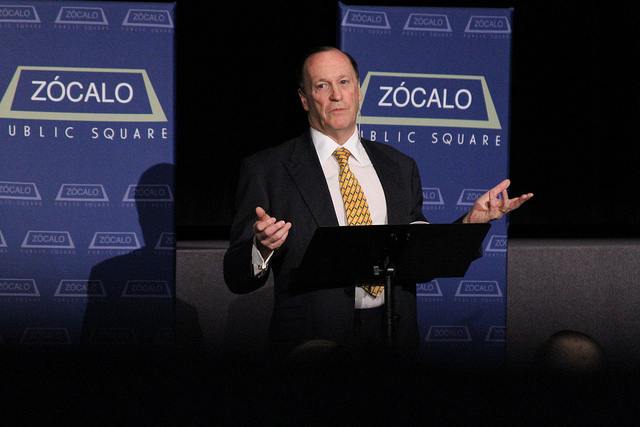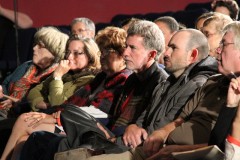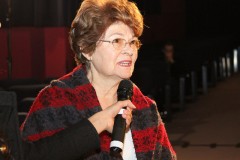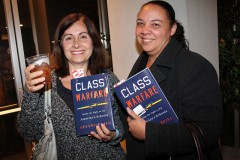
Steven Brill’s journey into the American public school system began at an epicenter of failure and dysfunction: New York City’s “rubber rooms,” the “temporary reassignment centers” where teachers sat in a sort of purgatory. Judged by the new school administration to be incompetent or abusive, and sometimes even charged with crimes, they couldn’t be in classrooms–but because of state tenure laws and their own contracts, they couldn’t be fired, either.
For as long as three to five years, teachers sent to the rubber room clocked in regular school hours, took home paychecks, earned their pension–and did nothing–as the union and the city would go through arbitration. The first teacher Brill encountered in the room was fast asleep with his head on a desk. Others brought beach chairs or played cards to pass the time, and they all shared with Brill their stories about the persecution or discrimination that had unfairly earned them their sentences. A lawyer and the founder of Court TV and American Lawyer Magazine, Brill investigated by diving into the arbitration transcripts, which ran 3,000-5,000 pages-longer, he said, than the OJ Simpson trial, a capital murder case.

He was dismayed to find that many of the teachers had been unequivocally failing at their jobs, like the fifth-grade teacher who assigned the biggest child in the class to act as her “enforcer,” or the drunk high school teacher who passed out in front of the classroom. Even more disturbing, because the union had the power to decide whether the contracts of the arbitrators would be renewed or not, arbitrators more often than not allowed these teachers to return to their classrooms.
“A union which had formed in the ’40s, ’50s, and ’60s across the country for very good reasons had morphed into something quite different,” said Brill in a lecture titled “Are Teacher’s Unions the Enemy?” at the Harmony Gold Theater in conjunction with the publication of his new book, Class Warfare: Inside the Fight to Fix America’s Schools. In the mid-20th century, teachers (by and large female) were underpaid and discriminated against. But today, he argued, the protection unions provide for teachers is “too much of a good thing.” As a result, the U.S. ranks “in the middle to the bottom third in student achievement among the developed countries in the world.”
K-12 schoolteachers make up one of the largest occupations in the country–and yet they are part of one of the only professions where performance doesn’t count, said Brill. Seniority alone determines salary.
An impassioned national reform movement has sprung up to combat these problems. Democratic politicians have rarely been on the side of education reform, because they rely on the donations of the unions. But President Obama and his Race to the Top plan, and more recently L.A. Mayor Antonio Villaraigosa, are part of what Brill called “a new breed of Democrats” who see making public schools and teachers accountable “as the new civil-rights issue of our generation.”

They are joined by a new generation of education reformers–young, Democratic Ivy League graduates–who are the products of Teach for America, like former Washington, D.C. chancellor Michelle Rhee and KIPP charter school network co-founder David Levin. Their experiences of transforming the lives of children in their own inner-city classrooms–and sending them back out into a failing system–have set up a battle between the forces of the teacher’s unions and the forces of reform.
The lines of battle are drawn especially starkly in the New York City school buildings where charter schools share space with public schools. In one school in Harlem, Brill recounted how just a few yards and a fire door separated a fifth-grade charter school teacher who was showing her students how to map an essay–a lesson he thought he’d do well to emulate with his own Yale University students–and her public school counterpart, who was screaming as children wrestled on the floor and talked above him.
In New York, parents east and west of Central Park have always had school choice, said Brill–they could move to the suburbs, or send their children to private schools instead of the local public schools. Now, for the first time, parents north of the park have choice, too.
“It’s like East Berlin and West,” he said. “They know their kids’ lives can be changed and propelled forward if they have a good education.” Charter schools prove that children who come from poor and broken homes “don’t have to fail.” It’s not that public schools aren’t capable of doing the same, Brill believes; it’s that they’re not allowed to.
There are other challenges to reform as well. The people giving out the Race to the Top money didn’t know enough about where it was going, and, as a result, states that deserved to win, like Louisiana, lost out to less-deserving states, like California (whose application, Brill said, “was a joke”).

More often, future solutions will “come from local politics,” he predicted, citing the Los Angeles Times publishing ratings of teachers as an example.
Even at the best charter schools, the battle is an uphill one; it’s not just about tearing up union contracts but also about giving teachers the tools they need to be successful. For the best teachers, too, the task can be daunting. One teacher Brill had tracked for the book was a superstar in her late 20s who burned out and quit suddenly. And not every teacher can be a star. “What we really have to focus on is making the average teacher” better, said Brill. “‘Average’ today means the teacher is in a culture of failure … Average has to mean something else. To me that’s really the only way that we’re going to put the American dream back into American schools.”
In an often heated question-and-answer session, educators, past and present, challenged Brill for what they perceived as unfair attacks on teachers and unions. Brill defended his argument by positing that the current system favors older teachers over younger ones. And, he said, in the end it’s about what’s best for the kids–something he feels the union and the bureaucracy too often forget.
Watch full video here.
See more photos here.
Buy the book: Skylight, Amazon, Powell’s.
Read expert opinions on what policy battles matter most to the future of American education here.
*Photos by Sarah Rivera.




Send A Letter To the Editors